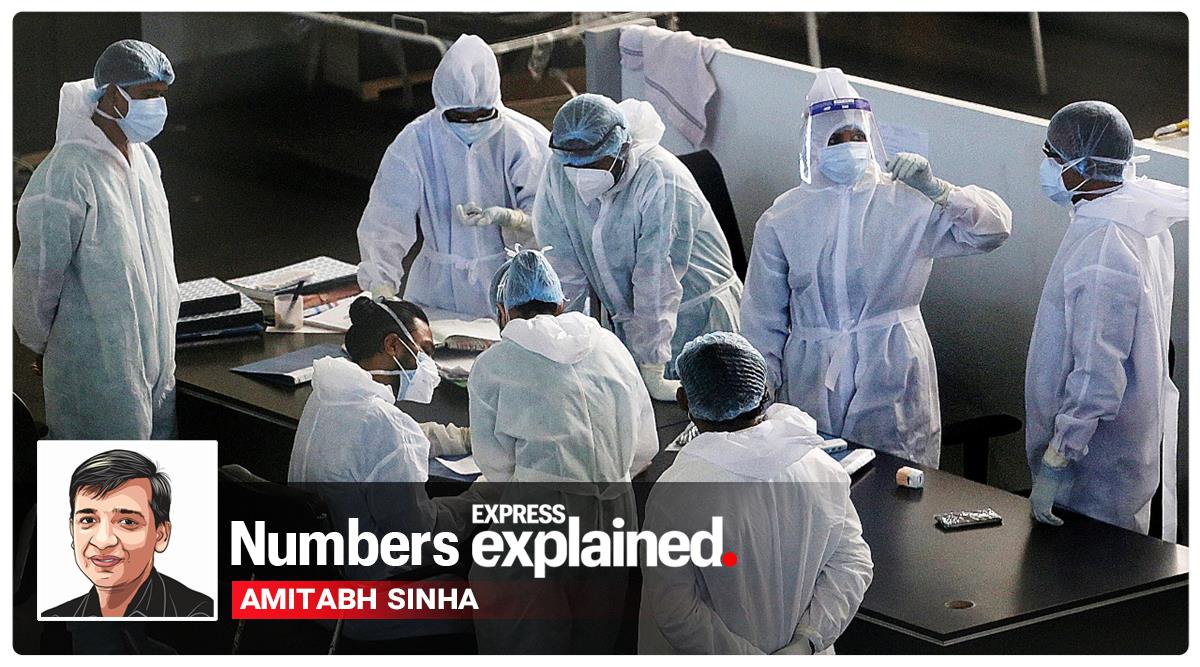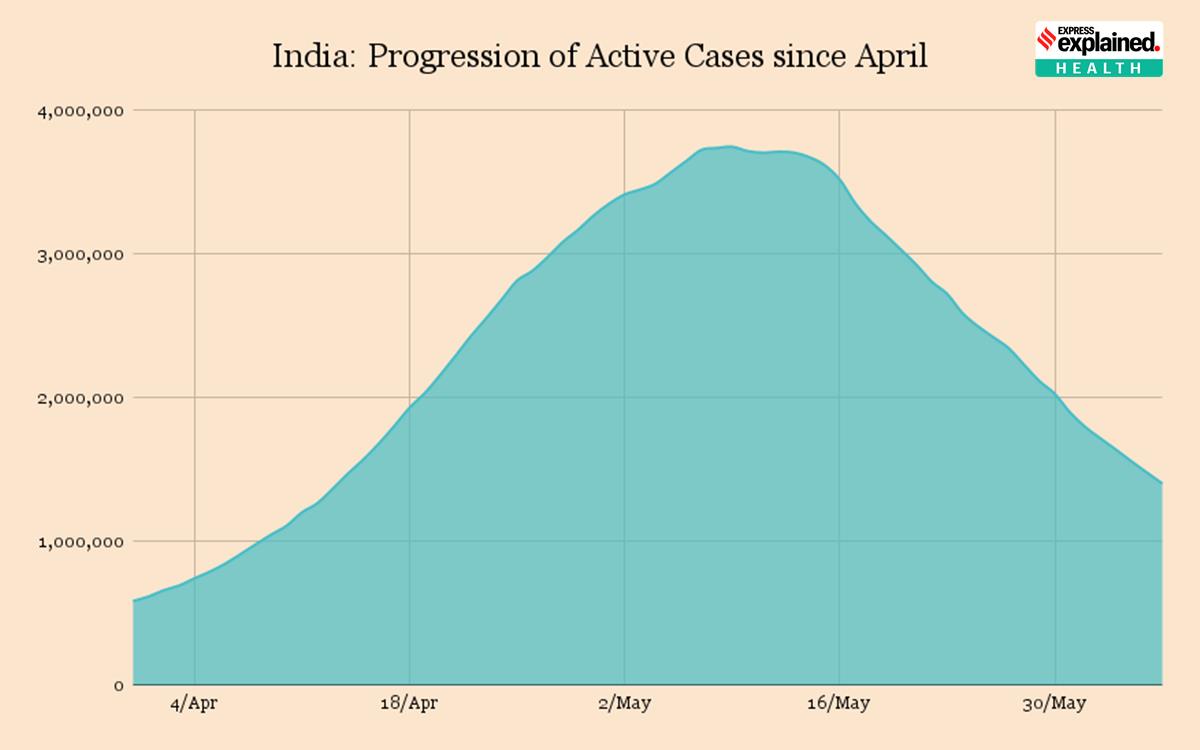India Covid-19 numbers: Just five states — Maharashtra, Tamil Nadu, Karnataka, Kerala and Andhra Pradesh — account for almost 70 per cent of the active caseload in the country right now.
Get email alerts for your favourite author. Sign up here
In the last one month, the number of active cases of coronavirus infections in the country have dropped by more than 62 per cent, significantly easing the burden on the hospitals and healthcare staff. At its peak, on May 9, there were more than 37.45 lakh active cases in the country. Consistent decline after that has brought this number to just about 14 lakh on Sunday.
This number is still about 40 per cent higher than the peak of active cases during the first wave. However, at the rate at which this number is declining, the current active caseload is expected to drop below the first wave peak within a week.
Just five states — Maharashtra, Tamil Nadu, Karnataka, Kerala and Andhra Pradesh — account for almost 70 per cent of the active caseload in the country right now. Each of these states have more than one lakh active cases. Karnataka and Tamil Nadu have about 2.5 lakh each. The good news, however, is that in each of these states, as also elsewhere in the country, the active caseload is declining rapidly.
As of now, there are only four states — Manipur, Mizoram, Nagaland and Sikkim — where the number of active cases is still on the rise. These numbers are very small compared to the larger states, but still a matter of concern given the population in these places. In the last one week, active cases have increased by over 300 in Mizoram and Sikkim, and by nearly 250 in Manipur.
Elsewhere, there is a rapid improvement in the situation. Uttar Pradesh, which has the largest population, has an active caseload of about 18,000, while in Bihar, this number is less than 10,000. Relatively smaller states like Uttarakhand, Chhattisgarh, Assam, and Punjab have much higher active caseloads right now. In Delhi, there are less than 6,000 active cases now.
Another comforting indicator is the continuing drop in the positivity rate. The weekly, or current, positivity rate, which had gone as high as 23 per cent in the first week of May has now come down to about 5 per cent. Positivity rate is an indicator of how fast the virus is spreading in the community. Of every 100 people tested, only five are now turning out to be positive.
The current positivity rate is now firmly below the overall positivity, a trend that was moving in the opposite direction for more than two weeks. Current positivity is the proportion of people who have tested positive in the last one week, while the overall positivity is the total number of people who have tested positive measured against the total number of samples tested.
Newsletter | Click to get the day’s best explainers in your inbox
In the last one week, the drop in the current positivity has been helped by a data reconciliation exercise to remove the discrepancies in the testing numbers. Between June 1 and June 6, the Indian Council of Medical Research added more than 75 lakh tests to the overall testing number. These were the tests that were reported by the states, but not accounted for in the central database. For a long time, there was a big discrepancy in the number of tests reported by the states, and that released by ICMR. The aggregate of the state data used to be two to three lakh more than the number released by ICMR. In the last one week, some of those discrepancies have been removed. The addition of large number of tests in the data has meant that the positivity rate declined at a much faster rate in the last one week. There is likely to be a marginal rise in the positivity rate in the coming week, now that the additions of uncounted testing samples from previous days has stopped.
Meanwhile, as is usual every week, there was a big drop in the vaccination numbers on Sunday. Only about 14.64 lakh doses were administered on Sunday, compared to the average of over 30 lakh in the rest of last week. Still, even the Sunday numbers are now double of what they used to be three weeks ago.
Source: Read Full Article




